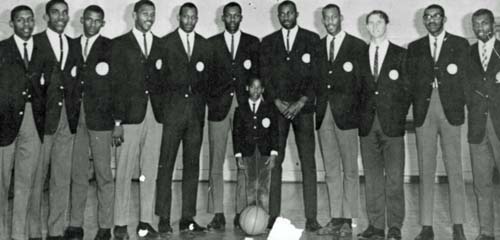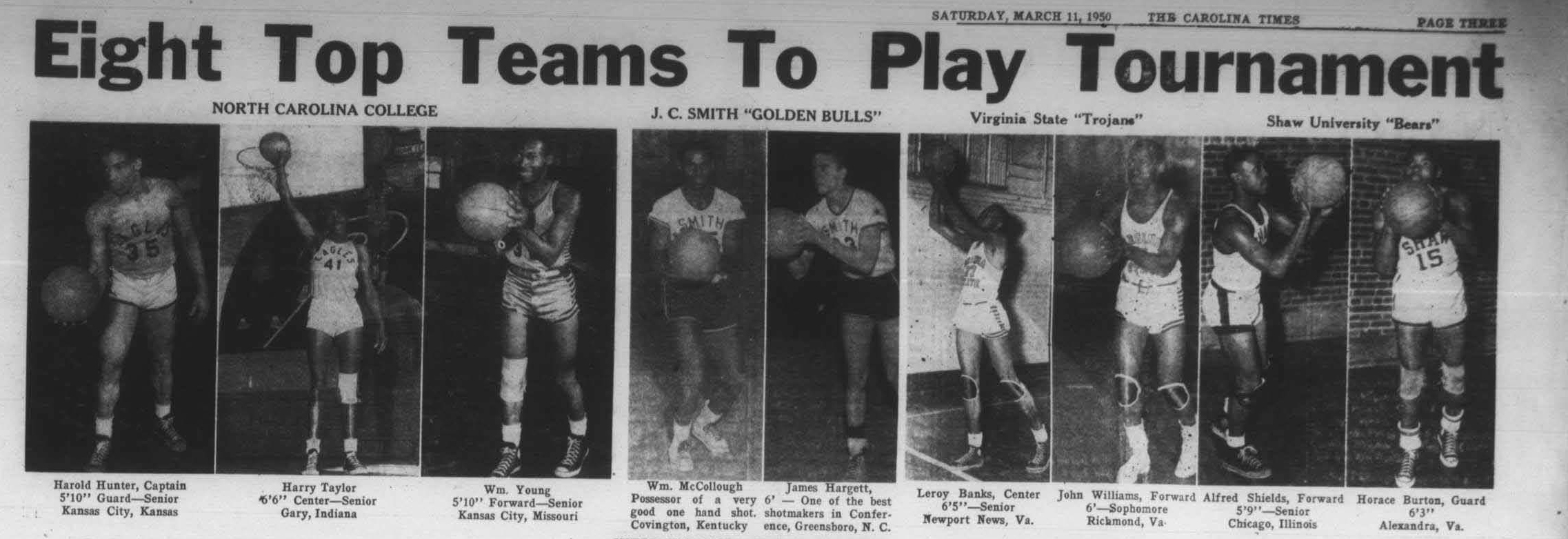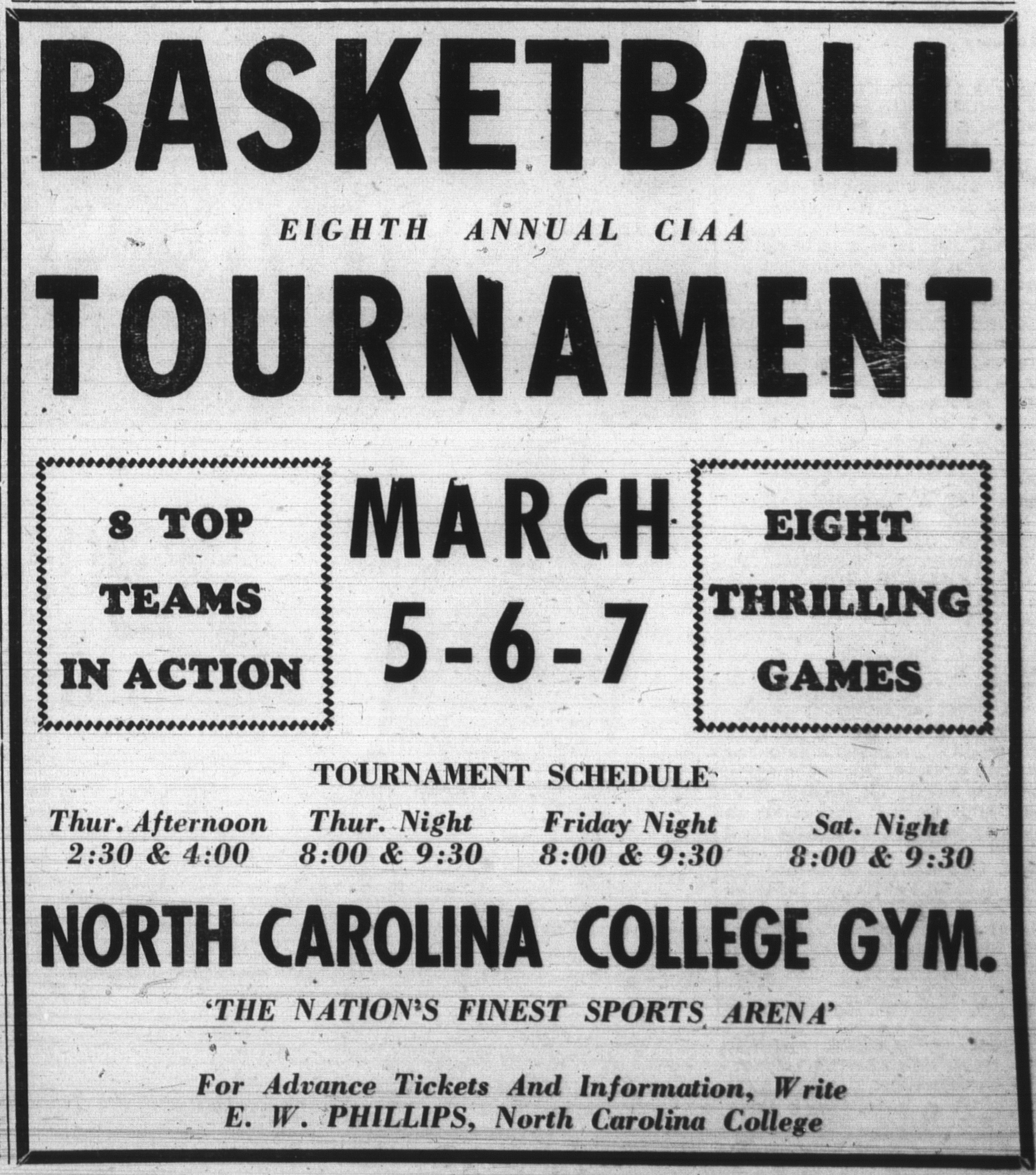Viewing search results for "North Carolina Central University"
View All Posts
Big news for alumni of public universities in North Carolina: student yearbooks from all 15 University of North Carolina system universities are now freely available online. Yearbooks for 14 of the schools have been digitized by the North Carolina Digital Heritage Center and are available in the North Carolina Yearbooks collection on DigitalNC, while yearbooks from North Carolina State University are available through the excellent Historical State digital collection.
These yearbooks are terrific resources for students and alumni, as well as anyone interested in the evolution of higher education and student life in 20th-century North Carolina. There are a total of 774 volumes available from these schools, ranging in date from 1890 (
The Hellenian, at UNC-Chapel Hill) to the present.
Pick your alma mater or hometown school from the links below and start browsing:
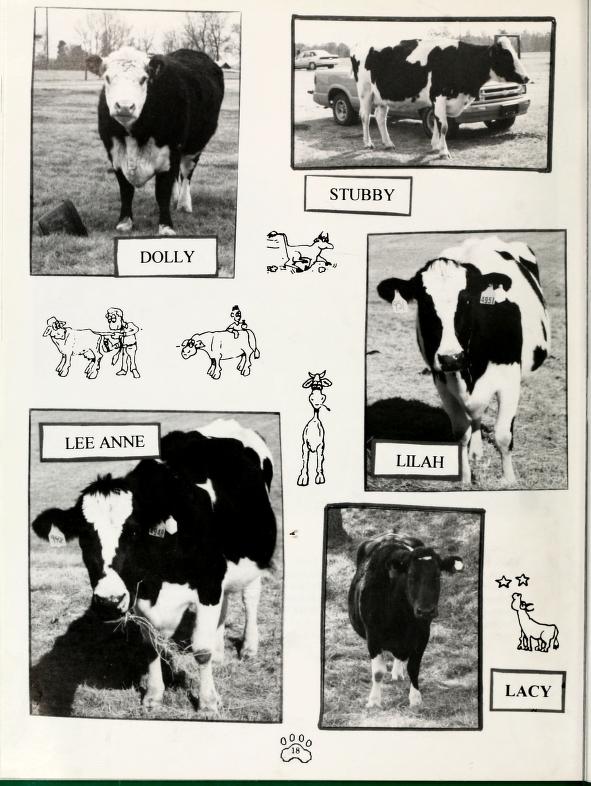
Twenty-nine yearbooks and one history of the school from Central Carolina Community College are now available online. Among many other courses of study the school offers a veterinary medical technology program, which frankly have some of the best pictures of any of the yearbooks in the North Carolina College and University Yearbooks digital collection. In addition to the typical student portraits, these volumes also honor the non-human affiliates of the program, including many beloved cats and dogs, horses, cows and even a turtle or two. Here are some of my favorite images:
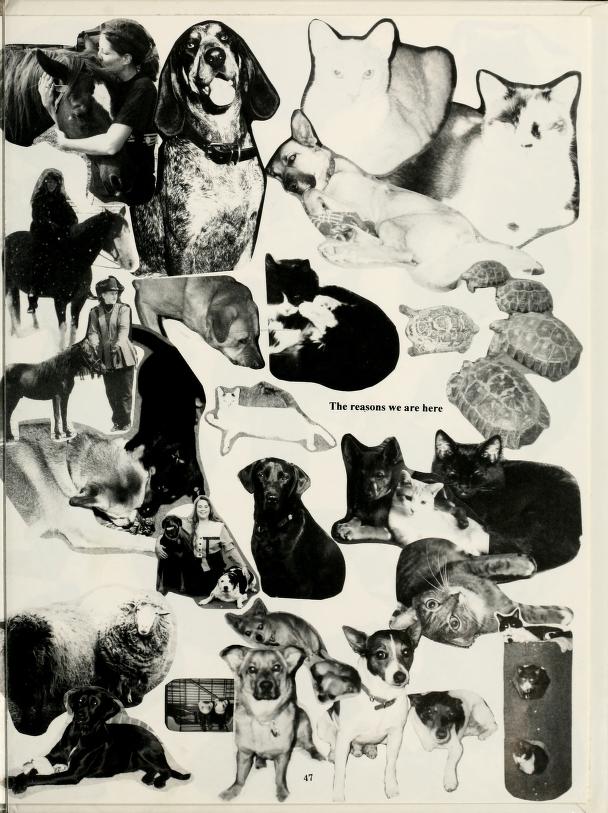
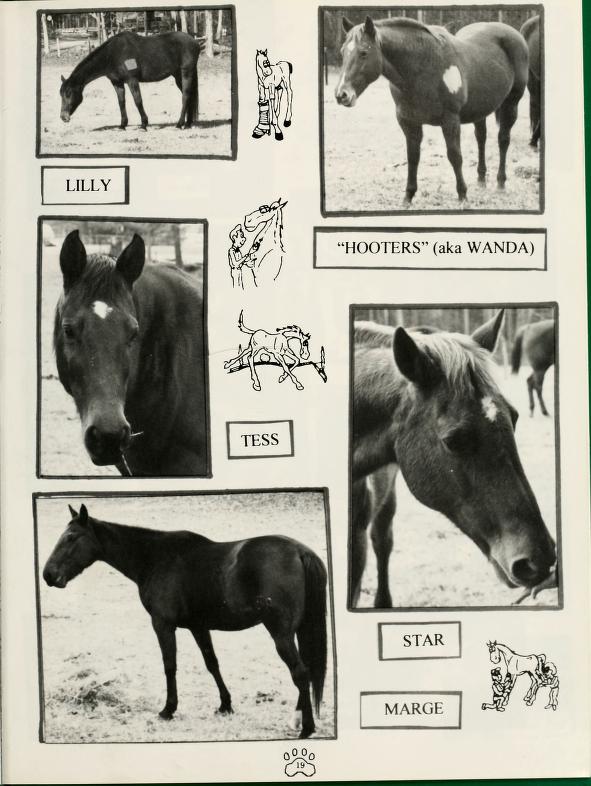
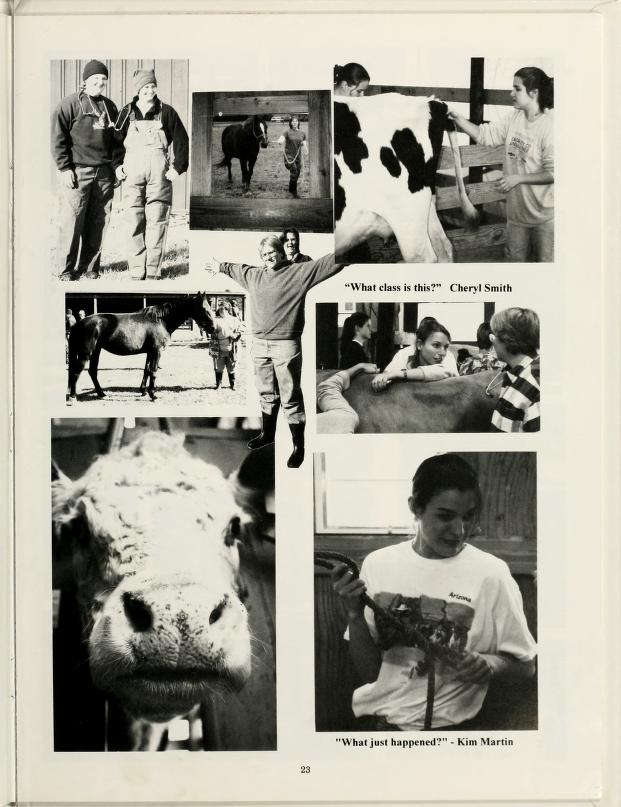
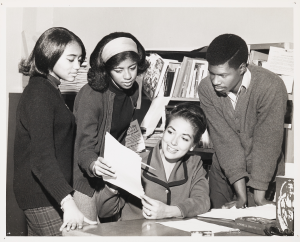
Ex Umbra Editorial Conference [1965]
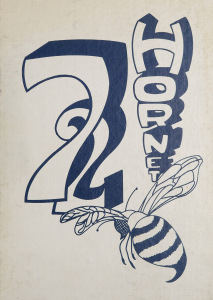 Along with materials about the university are materials from some of the historic Black high schools in Durham, especially Hillside High School. This batch has seven issues of the Hillside High School yearbook The Hornet (plus one yearbook from John R. Hawkins High School and two from the Lincoln Hospital School of Nursing). It also has several reunion programs and speeches, alumni directories, building and land records, a copy of the Hillside History Book, and two issues of the student newspaper The Hillside Chronicle. Though our partner did not have many issues of the Hillside High School student newspaper on file, we hope members of the community will be willing to contribute any issues they have saved to help make our digital collection more complete.
Along with materials about the university are materials from some of the historic Black high schools in Durham, especially Hillside High School. This batch has seven issues of the Hillside High School yearbook The Hornet (plus one yearbook from John R. Hawkins High School and two from the Lincoln Hospital School of Nursing). It also has several reunion programs and speeches, alumni directories, building and land records, a copy of the Hillside History Book, and two issues of the student newspaper The Hillside Chronicle. Though our partner did not have many issues of the Hillside High School student newspaper on file, we hope members of the community will be willing to contribute any issues they have saved to help make our digital collection more complete.
One especially exciting record from NCCU is the collection of boycott and student protest materials, which includes leaflets and a letter from a 1961 business boycott by the NAACP Youth Councils and College Chapters and correspondence from the 1970 SGA boycott. The 1961 boycott letter lists several recognizable stores that the NAACP YCCC successfully boycotted, and it makes an interesting mention of the role of race as an admission factor at Durham Academy. Separately, the demands of the SGA boycott (1970) are spelled out more clearly in this collection of correspondence between then-SGA President Phillip Henry and then-University President Albert Whiting. In the first document, students announce their intention to boycott classes until their “grievances and demands have been met to the satisfaction of the student body.” The organizers recommend the formation of a committee of students and faculty—where each have equal voting power—to implement solutions. For students looking for models of collective action and bargaining, these papers would be a good place to start.
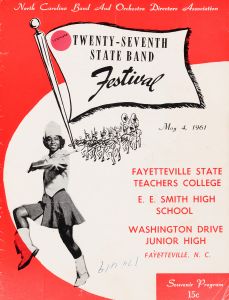 In terms of high school materials, one unique item from this batch is the Twenty-Seventh State Band Festival Program from 1961. The festival welcomed bands to Fayetteville State Teachers College and recognized some of the band directors from around the state. Former and current band kids may appreciate the list of pieces approved for the 1962 festival as well as the (somewhat familiar) rating system below.
In terms of high school materials, one unique item from this batch is the Twenty-Seventh State Band Festival Program from 1961. The festival welcomed bands to Fayetteville State Teachers College and recognized some of the band directors from around the state. Former and current band kids may appreciate the list of pieces approved for the 1962 festival as well as the (somewhat familiar) rating system below.
You can see the full batch of photos, programs, and other documents here, and the full batch of yearbooks and literary magazines can be found here. You can also see all issues of the North Carolina Central University student newspaper here and all issues of the Hillside High School student newspaper here. To see all materials from NCCU, you can visit their partner page and their website.
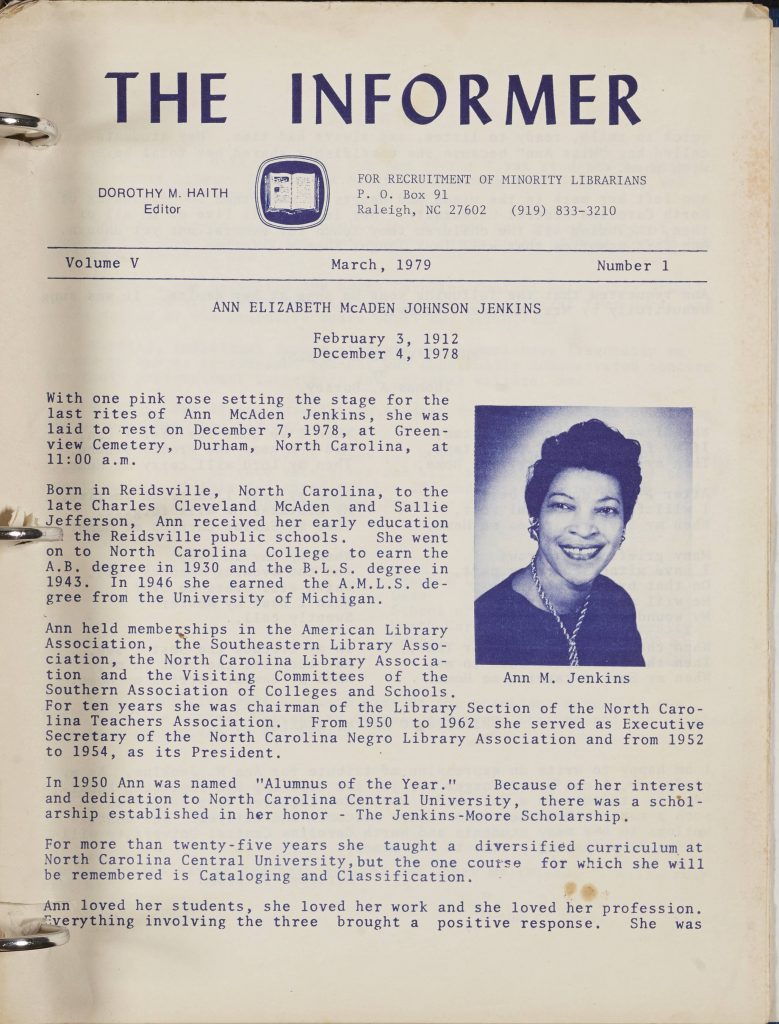
First page of the March 1979 issue of The Informer newsletter.
The Digital Heritage Center has worked with over 150 libraries throughout North Carolina. It’s no surprise that DigitalNC.org boasts a good number of items that document the history of libraries in the state, including scrapbooks and photos.*
For many years libraries were purposefully segregated, with branches tacitly or overtly meant to serve an African American neighborhood or community. The Richard B. Harrison Library in Raleigh is an example of a library that was a true social force, due to the hard work and influence of librarian Mollie Huston Lee. I thought of Ms. Lee recently. I was doing some work in our scrapbook collection, when I came upon an interesting newsletter tucked into one of the Irwin Holmes scrapbooks from the Durham County Library.
Titled “The Informer,” the newsletter’s tagline is: “For Recruitment of Minority Librarians” and appears to have been published first out of Raleigh and then out of Fort Valley, Georgia. There are two (possibly two and a half) issues in the scrapbook: one dating from March 1979 (pictured at right) and the second from September 1983. The issues of The Informer in our collection give biographies and moving tributes to African American librarians, such as Ann M. Jenkins of NCCU and Edna “Pinky” Penolya Mcaden King Watkins, an NCCU graduate who worked in libraries around the country. They also list positions available in North Carolina and around the country. The Informer publisher, IESMP or “Information Exchange System for Minority Personnel,” sold a number of other publications that offered to help librarians find jobs at institutions friendly to hiring minorities.
Dr. Dorothy May Haith was The Informer’s editor and possibly publisher, and she has had a lifelong passion for improving the profession and her community. A Shaw University and North Carolina Central University alum (she also holds degrees from Indiana University), Haith led the library at Bennett College, and also at Howard University. She has a number of publications to her name, has served on professional boards, and has given back to educational institutions by endowing scholarships. The Spring 2011 issue of Windows, published by the University Library at UNC Chapel Hill, describes a gift made to Wilson Library by Haith to honor those she felt encouraged her education (we call Wilson Library our home).
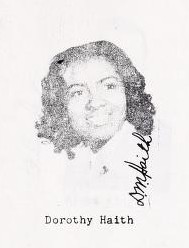
Dorothy Haith’s high school yearbook photo from Booker T. Washington High in Reidsville, N.C.
Through The Informer, Haith was building a network for minority librarians through the 1970s and 1980s, offering them professional resources and personal information about their peers. Though Googling gives most of us this benefit now (as it did for me when trying to find out more about Haith), before the internet, this was a true labor and a valuable service.
Recruitment of minorities and increasing diversity continues to be a great need. What many patrons may not realize is that libraries strive to be some of the most inclusive, safe spaces in the country. Many build towards that goal in numerous ways: through concerted efforts to recruit a diverse workforce, through selection of an inclusive and various group of materials for collections, and through ensuring libraries are safe for ALL patrons. In fact, the American Library Association, the national professional organization for librarians, reinforces these goals through a code of ethics, professional development, and scholarships. As a profession, we have a long way to go, but these steps get us closer.
At DigitalNC, we hope to identify and help share more collections from our partners related to North Carolina’s minority populations in the coming year. If you work at a library or other cultural heritage institution and have collections that fit this category that you’d like to share online, we’re eager to hear from you.
*There’s also a rich Library History digital collection from the State Library of North Carolina.
**NCCU has numerous issues of The Informer in their collection, available at the School of Library and Information Sciences Library.
The Central Intercollegiate Athletic Association (CIAA), founded in 1912, is celebrating its centennial as basketball teams from twelve member institutions and fans gather today in Charlotte to kick off the annual tournament.
This article from today’s News & Observer tells the story of the CIAA basketball conference.
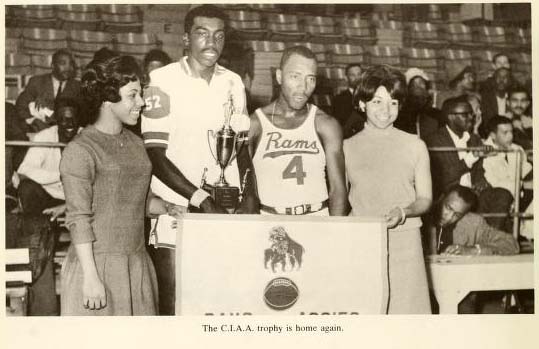
Earl “The Pearl” Monroe and others. The Winston-Salem State College Rams brought home the CIAA trophy in 1967. Image from the 1967 volume of “Red and White,” the Winston-Salem State University student yearbook.
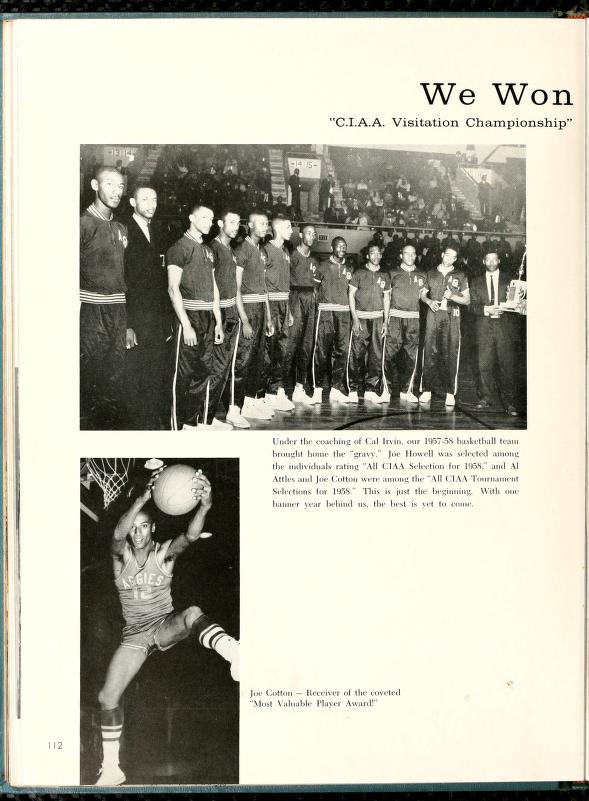
Page from the 1958 edition of “The Ayantee,” North Carolina Agricultural and Technical University’s student yearbook, depicting that year’s CIAA championship team.
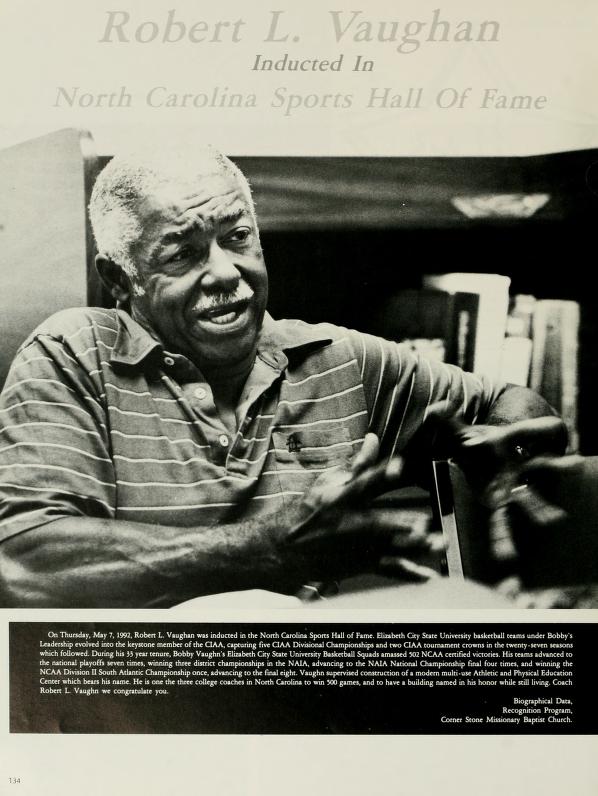
In 1992, Elizabeth City State University basketball coach Bobby Vaughan was inducted into the North Carolina Sports Hall of Fame. Under Vaughan’s leadership, the basketball team won five CIAA Divisional Championships and two CIAA tournaments. Image from the 1992 volume of “The Viking,” the Elizabeth City State University student yearbook.
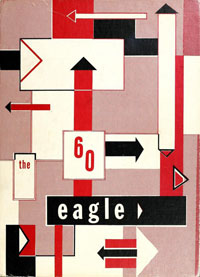
The 1960 edition of The Eagle, the North Carolina Central University student yearbook, is now online. The yearbook was given to the North Carolina Central University Archives by a generous member of the class of 1961.
To see more materials from NCCU, visit their partner page.
A new set of maps, posters, and architectural plans from our partner, the Durham County Library, has been added to our site. They range in time from the late 1880s to the present, and many provide local insight to the culture of Durham.
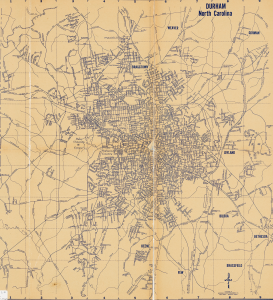
Map of Durham, N.C., c. 1957
One of the most exciting maps that we’ve added is this mid-century Western States Publishing Co. Map—perhaps one of the last versions that documents Durham before I-85 (1958) and N.C. 147 highway were built (1967-1970). Comparing it to the city today, you can tell what was disrupted during construction.
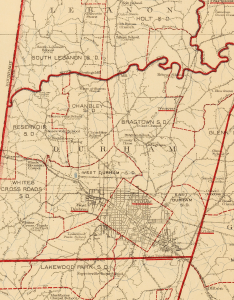
Detail from the 1920 map of Durham County
Similarly, this map of Durham from 1920 notes the schools in the area and whether they served Black or White students. According to this map, many of the schools closest to the city center only served White students, while many of the Black schools are further out in the county.

Another neat item in this batch is this Historic Durham County Poster created by John B. Tomlinson. Around the drawn map of Durham County are illustrations of some of Durham’s famous and historic landmarks, including Duke University’s West Campus, NC Central University, and the County Courthouse. These and other annotations help identify some of the big moments in Durham’s history, such as the surrender of J.E. Johnston at Bennett Place.
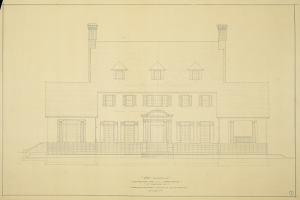
House for Mrs. L.L. Morehead (c. 1900)
Another item that illuminates a part of Durham’s history is this set of architectural plans for the house of Mrs. L.L. Morehead. The house was built for Eugene Morehead, son of former North Carolina Governor John Motley Morehead, and Eugene’s wife, Lucy Lathrop Morehead. The house was torn down in 1961, but photos and illustrations of the final product are still around. Other building plans for the house, including some of the interior, were also uploaded in this batch.
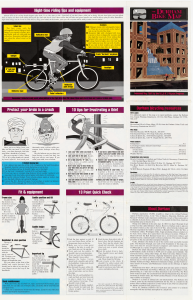
1991 Bike Map
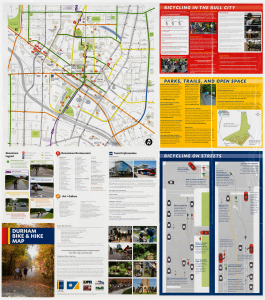
2010 Bike Map
In terms of more modern materials, take a look at these two bike maps: one from 1991, and one from 2010. The entire back side of the 1991 version is covered in safety information, like how to wear a helmet and 10 tips for “frustrating” a bike thief (No.8 is to “Engrave your social security number on expensive parts,” which doesn’t seem like common advice today.). Meanwhile, the back of the 2010 map is more like a typical city map, with directories of things in downtown Durham.
One bonus of these maps is that they are catalogued and finable through the Durham Public Library’s website. You can see all the maps we digitized in this batch here, and you can see all materials from Durham County Library here. For more information about the library and their holdings, visit their website.
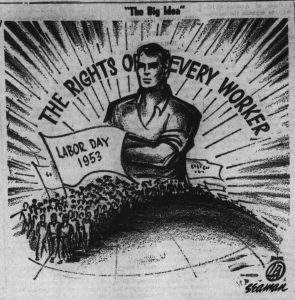
“The Big Idea,” 1953
Issues of the Charlotte Labor Journal and Dixie Farm News from 1935-1953 are now available in our North Carolina Newspapers collection thanks to our partner the University of North Carolina at Charlotte. According to the Library of Congress, the paper was published weekly as the “organ of the Charlotte Central Labor Union.”
The first issue we have online, from January 24, 1935, was published less than a year after the General Strike of 1934, when between 300,000 and 500,000 textile workers along the East Coast (most from North and South Carolina) protested working conditions. Despite the large turnout and national recognition, though, workers in the Southern states did not see their demands met, which made many members lose faith in their unions.
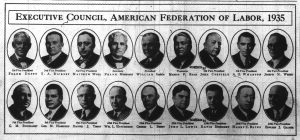
Portraits of the AFL Council from January 24, 1935
The issues that we have online roughly follow the trajectory of organized labor in the state overall; the last issue we have is from 1953, when Operation Dixie officially ended, ultimately failing to unite textile workers into a single large union. Part of that failure stemmed from opposition by the AFL, the union behind the Charlotte Labor Journal.
To see more materials from UNC Charlotte, visit their partner page or their library website. To see more digital content about labor unions in North Carolina, click here.
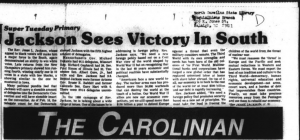
Coverage of the Jesse L. Jackson Presidential Campaign in 1988.
DigitalNC now has new issues of The Carolinian from 1988 to 1992. The Raleigh, NC based newspaper was a popular source of information for the African American Community in the RDU area. Each Monday and Thursday, The Carolinian informed the African American community of issues and news that affected their daily lives.
The new issues include the 1988 Presidential campaign coverage of Rev. Jesse L. Jackson, along with covering local stories from the Historical Black Colleges (HBCU) in the area, Shaw University and North Carolina Central.
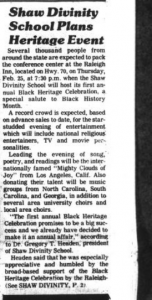
Coverage of the Shaw University Divinity School Heritage Event in 1988.
Still in print today, The Carolinian provides the African American community with news that takes place on the national, regional, and local levels. To see what The Carolinian looks like today, please visit their website. To view other African American community newspapers in North Carolina, visit our website here and click on African American Papers.
Special thanks to our partner the Olivia Raney Local History Library for their assistance. Visit their homepage by clicking here.
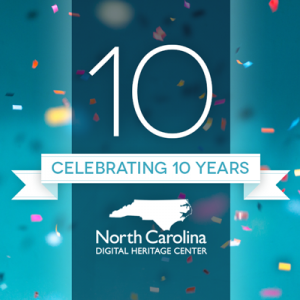 It’s DigitalNC.org’s 10th birthday! Though we had hoped to be in the office celebrating, we’re still taking time to look back at years of hard work and the collaborative spirit that makes the North Carolina Digital Heritage Center (NCDHC) what it is!
It’s DigitalNC.org’s 10th birthday! Though we had hoped to be in the office celebrating, we’re still taking time to look back at years of hard work and the collaborative spirit that makes the North Carolina Digital Heritage Center (NCDHC) what it is!
To date, NCDHC has partnered with 273 libraries, museums, alumni associations, archives, and historic sites in 98 of North Carolina’s 100 counties and we’re growing all the time. Our website currently includes 4.2 million images and files. We share this accomplishment with every institution we’ve worked with. We’d never have gotten to 10 years without staff (permanent, temporary, and student!), our partners, or the network of colleagues all over North Carolina who have encouraged, advised, and supported our work.
As we approached our anniversary, we realized that our website lacked a synopsis of how NCDHC came to be, and our history. So read on for a brief look at how we got started and our major milestones.
Our History
The North Carolina Digital Heritage Center was one outcome of a comprehensive effort by the state’s Department of Cultural Resources (now the Department of Natural and Cultural Resources) to survey and get a broad overview of the status of North Carolina cultural heritage institutions. That effort was entitled NC ECHO (North Carolina Exploring Cultural Heritage Online) and was funded by the Institute of Museum and Library Services (which also supports us – thanks IMLS). A major goal of NC ECHO was a multi-year needs assessment. NC ECHO staff visited hundreds of cultural heritage institutions throughout the state to collect data and interview curators, librarians, volunteers, archivists, and more. Many of our partners still remember their visits!
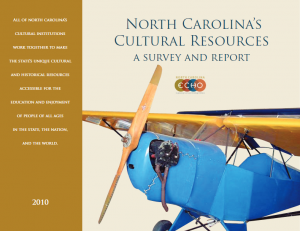 Data collected at these site visits was combined with survey responses to reveal a “state of the state,” summarized in a 2010 report, cover pictured at right. The assessment revealed a lot but, specific to digitization, staff found that nearly three-quarters of the 761 institutions who completed the survey had no digitization experience or capacity. Members of the Department of Cultural Resources (which includes the State Library, State Archives, and multiple museums and historic sites) began brainstorming with other area institutions about a way to help efficiently and effectively provide digitization opportunities. While the NC ECHO project offered digitization grants, workshops, and best practices, an idea emerged of a centralized entity that could assist institutions that didn’t have the capacity to do the work in house. The State Library of North Carolina and UNC-Chapel Hill Libraries joined together to create such an entity: the North Carolina Digital Heritage Center. The Center would be located in Chapel Hill, taking advantage of its central location and the digitization equipment and expertise already available in Wilson Special Collections Library. The State Library would provide funding, guidance, and ongoing promotion and support of the Center’s services.
Data collected at these site visits was combined with survey responses to reveal a “state of the state,” summarized in a 2010 report, cover pictured at right. The assessment revealed a lot but, specific to digitization, staff found that nearly three-quarters of the 761 institutions who completed the survey had no digitization experience or capacity. Members of the Department of Cultural Resources (which includes the State Library, State Archives, and multiple museums and historic sites) began brainstorming with other area institutions about a way to help efficiently and effectively provide digitization opportunities. While the NC ECHO project offered digitization grants, workshops, and best practices, an idea emerged of a centralized entity that could assist institutions that didn’t have the capacity to do the work in house. The State Library of North Carolina and UNC-Chapel Hill Libraries joined together to create such an entity: the North Carolina Digital Heritage Center. The Center would be located in Chapel Hill, taking advantage of its central location and the digitization equipment and expertise already available in Wilson Special Collections Library. The State Library would provide funding, guidance, and ongoing promotion and support of the Center’s services.
At its beginning, the Center’s staff digitized small collections of college yearbooks, needlework samplers, postcards, and photographs and made them available through DigitalNC.org. They went to speak with organizations interested in becoming partners, and began taking projects for digitization. Here’s a list of NCDHC’s earliest partners, who came on board during late 2009 and 2010.
Though we’re not positive of the exact date, we believe DigitalNC.org launched on or near May 12, 2010. Here’s a look at that original site!
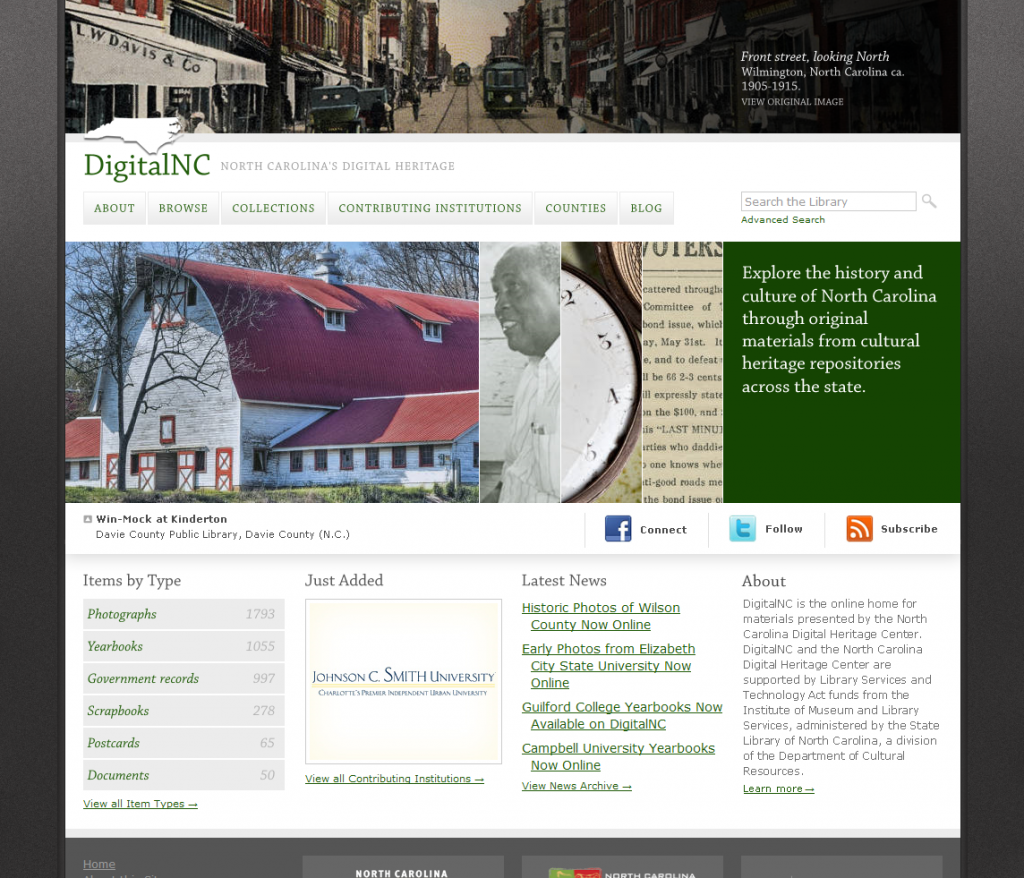
In 2011, word about the Center spread. Staff started responding to demand from partners, incorporating newspaper digitization. In late 2012, also in response to popular demand, the Center began digitizing high school yearbooks. Yearbooks and newspapers are some of the most viewed items on DigitalNC, and they remain a significant portion of our work to this day.
In 2013, NCDHC joined the Digital Public Library of America (DPLA) as North Carolina’s “service hub.” The DPLA collects information from digitized collections all over the nation and provides it together in one searchable interface at dp.la. Because of our participation, users can browse and search for collections from North Carolina alongside items from institutions around the country.
Throughout the years, we’ve tried to expand services to fit our partners’ goals. In 2015, we trialed an audiovisual digitization project that incorporated the first films into DigitalNC. Today, we partner with the Southern Folklife Collection at Wilson Special Collections Library to provide audio digitization on an ongoing basis. In 2016, we added a new partner category – alumni associations – to support more digitization of African American high school yearbooks and memorabilia. The following year, we announced a focus on digitization of items documenting underrepresented communities. We also started going on the road with our scanners! For institutions that don’t have the staff time or resources to travel to Chapel Hill, we offer to come for a day or two and scan on site.
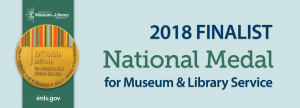 2018 and 2019 saw several major milestones. We were nationally recognized as an Institute of Museum and Library Services National Medal finalist, and we began a major software migration. Both were a tribute to the size and extent of our operation, though in different ways. As we’ve approached our 10th anniversary we’ve focused on working with partners in all 100 of North Carolina’s counties. Whether you’re rural or metropolitan, we believe your history is important and should be shared online.
2018 and 2019 saw several major milestones. We were nationally recognized as an Institute of Museum and Library Services National Medal finalist, and we began a major software migration. Both were a tribute to the size and extent of our operation, though in different ways. As we’ve approached our 10th anniversary we’ve focused on working with partners in all 100 of North Carolina’s counties. Whether you’re rural or metropolitan, we believe your history is important and should be shared online.
One of the ways we’re commemorating this anniversary is to ask our partners and stakeholders how they think we’ve impacted them and their audiences. Join us here on the blog in the second half of 2020 as we share these brief interviews, reflect, and celebrate. Thank you for reading, enjoy the site, and here’s to another 10 years of making North Carolina’s cultural heritage accessible online!










